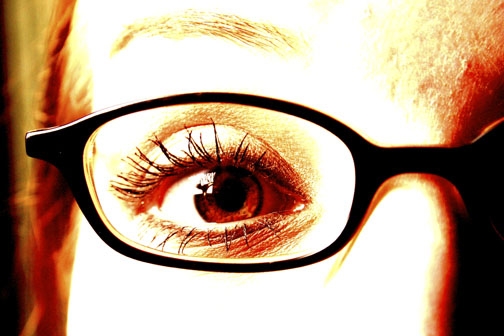
© Getty Images
People prescribed glasses for myopia (near-sightedness) find their error of refraction to increase by an average of -.25 diopters per year. Glasses do not cure myopia but rather treat symptoms of dis-ease.
What is the cause of myopia?One popular textbook cites research that showed that myopia "can be produced by changing refraction during development." This means that glasses are found to cause the problem they purport to correct. Fit an animal with glasses and they will misshape their eyes.
The textbook states, "The shape of the eye appears to be determined in part by the refraction presented to it," and later adds that, "extensive close work [and] studying accelerates the development of myopia." The paragraph concludes that the "defect" of myopia can be corrected by glasses.
How can glasses be recommended to correct the defect of myopia when glasses are known to cause myopia?
If studying can accelerate the development of myopia and if glasses cause myopia, shouldn't that be a sign that alternative treatment must be found and that the education system itself must be looked at more clearly?
An eye surgeon named William Horatio Bates concluded that
glasses are in fact more harmful than helpful, and he discovered that through teaching relaxation, his patients improved their eyesight dramatically.He discovered this because he found a trend among patients that returned to him after losing their glasses. Their eyesight had improved!
What happens when people stop straining so much? Do people that remove the causes of strain improve their eyesight and retrain their brain?
Dr. Meir Schneider is an example of a man that has gone beyond the realm of possibility for most people. He is a man who improved his eyesight from a condition determined by doctors to be permanent blindness and now operates the School for Self Healing in San Francisco.
Dr. Schneider believes that we shouldn't be spending much money at all on doctors and health care but that we should be healing ourselves, being more aware of how we move our bodies and having faith.
One of the methods Dr. Schneider teaches his students wishing to improve their eyesight is called palming. It is a method that Dr. Bates developed and taught his students and patients.
What is palming?Palming is putting your palms over your eye socket and breathing, relaxing, and imagining darkness. According to Dr. Schneider it takes six minutes to have complete relaxation with palming.
Dr. Schneider personally used palming to improve his eyesight from a condition worse than 20/2000 to 20/60 and to qualify him for an unrestricted driver's license.
It is no wonder he has so much faith since he has helped people overcome arthritis, muscular dystrophy, and a host of other maladies, including, of course, myopia.
Now when will the mainstream catch on? Over 180 million Americans use corrective lenses. Will mainstream medicine evolve or will it continue to attempt to shut down this information of once again a simple practically free cure for a very common problem?
Sources:Review of Medical Physiology - Ganong, William F.
An in-person interview with Dr. Meir Schneider
Improve Your Eyesight NaturallyThe School for Self-Healing

You just gave every doctor who has spent a decade in medical school a spine tingling fright. Dear god, what were all those years of medical school for, then? It's already much harder than I thought to pay off all that debt I have without losing more potential patients! I'd better make sure that I jump on the bandwagon and fight this... this... education of normal people! They can't find out!!! No no no!!! New laws! Regulations! Police! Help help help! *flailing arms*